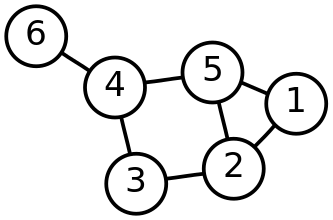FastCompany: Infographic: Numerology: SXSW
 Alphachimp
Alphachimp  Thursday, March 6, 2008 at 1:48PM
Thursday, March 6, 2008 at 1:48PM  information graphics |
information graphics |  Post a Comment
Post a Comment We are a visual learning company that supports business innovation, strategic planning, and collaborative design—
both onsite and online.
learn more | contact us
![]()
![]()
![]()
![]()
![]()
![]()
Sign up! Become a part of our community of friends.
 Alphachimp
Alphachimp  Thursday, March 6, 2008 at 1:48PM
Thursday, March 6, 2008 at 1:48PM  Alphachimp
Alphachimp  Thursday, January 31, 2008 at 8:17AM
Thursday, January 31, 2008 at 8:17AM  This web 2.0 app drastically improves the (usually) tedious process of tracing family history, by combining the elegance of Flickr and the tools of social networking. http://www.geni.com
This web 2.0 app drastically improves the (usually) tedious process of tracing family history, by combining the elegance of Flickr and the tools of social networking. http://www.geni.com
 Alphachimp
Alphachimp  Sunday, January 27, 2008 at 3:57PM
Sunday, January 27, 2008 at 3:57PM  The power and flexibility of a network--whether a simple group of casual neighbors or a complex next generation communication network--depends not just on the number of connections, but on the quality of the nodes, and more important, the type of nodes. Below is a fantastic intro to the concept of graphs and networks. It helps in understanding the a social graph and how it differs from a social network.
The power and flexibility of a network--whether a simple group of casual neighbors or a complex next generation communication network--depends not just on the number of connections, but on the quality of the nodes, and more important, the type of nodes. Below is a fantastic intro to the concept of graphs and networks. It helps in understanding the a social graph and how it differs from a social network.
|
 Alphachimp
Alphachimp  Thursday, January 17, 2008 at 8:38AM
Thursday, January 17, 2008 at 8:38AM  As designers and facilitators of rich conversations, we serve a valuable role in innovation.
As designers and facilitators of rich conversations, we serve a valuable role in innovation.
As designers, we can give shape to the results of those conversations. We produce a thing--sometimes called a "work product" or "knowledge object" or "communication tool" or [insert corporatespeak term here].
These work products can take the form of a static model, a complex information graphic, a magazine article, a schematic diagram, a fully interactive website, a private wiki, an unedited blog post, or an airport lobby-sized installation art piece. The form is chosen for the target audience (and.. ah yes, the budget) in question.
Whatever the output, the real heart and soul of the innovation process seems to remain the conversation.
The network members of Social Media Today are playing in the emerging space of new ways to have those conversations.
In economics, business and government policy,- something new - must be substantially different, not an insignificant change. In economics the change must increase value, customer value, or producer value. The term innovation may refer to both radical and incremental changes to products, processes or services. |
 Alphachimp
Alphachimp  Tuesday, December 4, 2007 at 6:22PM
Tuesday, December 4, 2007 at 6:22PM Watch graphic facilitator Steph Crowley create a 35-foot mural over 5 days in high speed--inspirational music included!